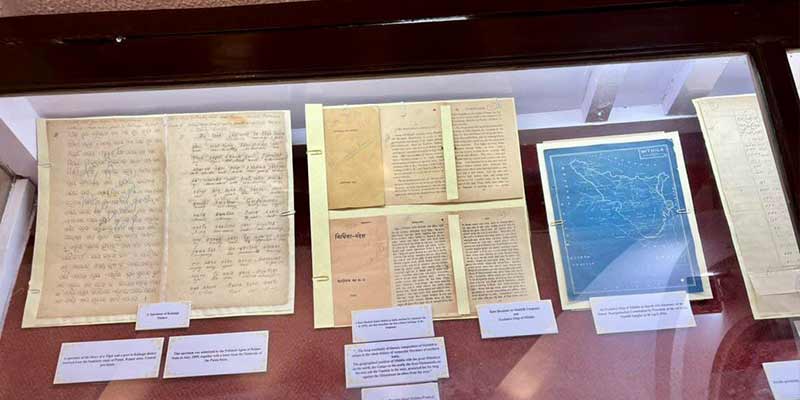- India
- Dec 18
What is the purpose of National Mission for Manuscripts?
The National Mission for Manuscripts (NMM) has documented 5.2 million manuscripts, conserved 90 million folios and digitised 3.30 crore of manuscripts across the country from its inception in 2003 till September 2023.
In addition to this, the NMM has uploaded 1,25,000 manuscripts on its cloud platform out of which 75,000 manuscripts are available for research purposes on public domain.
What is a manuscript?
• A manuscript is a handwritten composition on paper, bark, cloth, metal, palm leaf or any other material that has significant scientific, historical or aesthetic value.
• The term “manuscript” has its origins in the Latin term “manuscriptus”, which means written by hand.
• Lithographs and printed volumes are not manuscripts.
• Manuscripts are found in hundreds of different languages and scripts.
• Manuscripts are distinct from historical records such as epigraphs on rocks, firmans, revenue records which provide direct information on events or processes in history.
National Mission for Manuscripts
• The National Mission for Manuscripts was established in February 2003 by the government of India.
• It seeks to unearth and preserve the vast manuscript wealth of India.
• The Mission has the mandate of identifying, documenting, conserving and making accessible the manuscript heritage of India.
• It is a national-level comprehensive initiative which caters to the need of conserving manuscripts and disseminating knowledge contained therein.
• It is working towards fulfilling its motto, ‘conserving the past for the future’.
The objectives of National Mission for Manuscripts are to:
• Locate manuscripts through national level survey and post-survey.
• Document each and every manuscript and manuscript repository, for a national electronic database that currently contains information on four million manuscripts making this the largest database on Indian manuscripts in the world.
• Conserve manuscripts incorporating both modern and indigenous methods of conservation and training a new generation of manuscript conservators.
• Train the next generation of scholars in various aspects of manuscript studies like languages, scripts and critical editing and cataloging of texts and conservation of manuscripts.
• Promote access to manuscripts by digitising the rarest and most endangered manuscripts.
• Promote access to manuscripts through publication of critical editions of unpublished manuscripts and catalogs.
• Facilitate the public’s engagement with manuscripts through lectures, seminars, publications and other outreach programmes.
Manorama Yearbook app is now available on Google Play Store and iOS App Store

